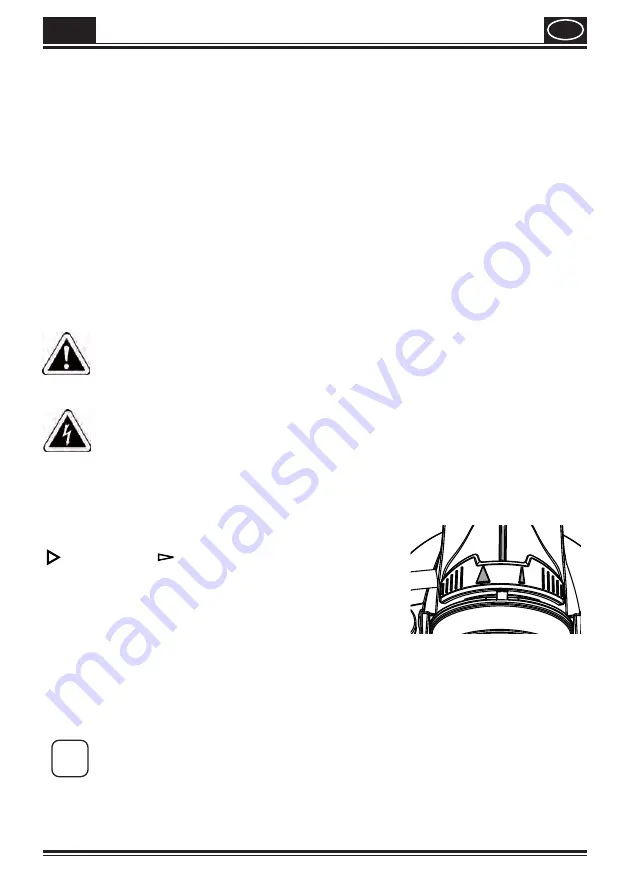
GB
23
W 400
When working on lying objects: Turn the suction tube forwards. (Fig. 2 A)
Spraying work when working on overhead objects: Turn the suction tube rearwards.
(Fig. 2 B)
•
Place the container on a paper base and pour in the prepared coating substance with the
aid of the feed hopper included in the scope of supply (Fig. 1, 15). Screw the container
tightly onto the spray gun.
•
Connect the front part with the rear part of the gun (Fig. 3).
•
Put the machine down only on a level, clean surface. Otherwise the machine could tip
over!
•
Pull the trigger. The W 400 has a two-stage trigger. In the first stage the turbine is started.
If the trigger guard is pressed further, the material is transported.
•
Adjust the spray setting on the spray gun.
12. Selecting the Spray Setting (Fig. 4)
WARNING! Danger of injury! Never pull the trigger guard while adjusting
the air cap.
2 different spray jet shapes can be set by turning the air cap (fig. 4, 1)
Tighten the union nut (Fig. 4, 2) fully so that no paint is able to penetrate
the device. Check regularly whether the union nut has worked loose during
operation.
Fig. 5 A
= vertical flat jet
for horizontal surfaces
Fig. 5 B
= horizontal flat jet
for vertical surfaces
Use the red adjustment lever to also switch between a wide
( ) and a narrow ( ) spray jet.
13. Adjusting the Material Volume (Fig. 6)
The volume of material can be set by turning the material volume control (Fig. 6, 1) in
steps from 1 (minimum) to 12 (maximum).
i
An average flow setting provides the best result for most wall paints.
Summary of Contents for W 400
Page 1: ...wagner group com D GB NL F WALL SPRAYER W 400 ORIGINAL BETRIEBSANLEITUNG...
Page 2: ...W 400 A B a 9 12 13 6 8 4 5 3 1 2 10 11 14 15 16 7 BERSICHT OVERVIEW APER U G N RAL OVERZICHT...
Page 3: ...W 400 click c a b A B 1 2...
Page 4: ...W 400 20 30 cm g a b 1 1 1 2 3 1 2 3...
Page 5: ...W 400 4 2 1 2 2...
Page 71: ...NL 65 W 400...
















































